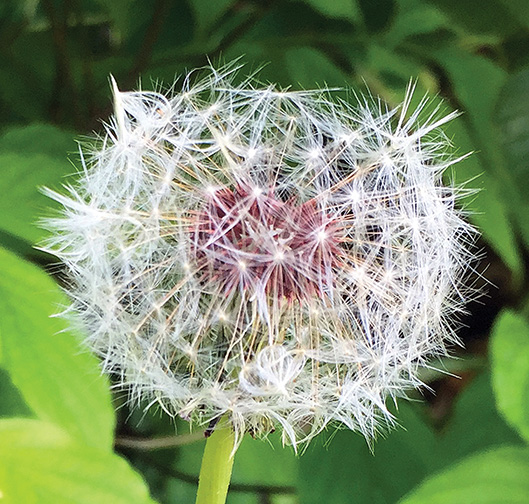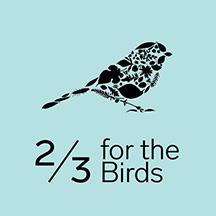By Will Rowlands
Why do people go to such extremes to get rid of dandelions? There are many good things about the plant and very little bad, unless you consider the amount of work and herbicides expended in trying to get rid of them!
Dandelions (Taraxacum spp.) haven’t always been considered weeds. Quite the contrary, they’ve been prized for their beauty, eaten, and used in medicine and magic. They were reportedly considered delicacies by the Victorian gentry, who used them in salads and sandwiches. It is likely they were brought to the U.S. intentionally for culinary and/or medicinal purposes.
Dandelions were used for centuries by the Celts, Chinese, Egyptians, Greeks, Native Americans, Romans and others. They are so popular in Japan, where they are called Tampopo, that there are horticultural societies devoted to them.
In his book, Genius of Place: The Life of Frederick Law Olmsted, Justin Martin writes about the Ramble, a section of Central Park that opened in the summer 1859 …“New Yorkers by the thousands flocked to the Ramble, eager to enjoy a piece of countryside right in the city, just as Olmsted and Vaux had envisioned. In these times, the only hint of the rural for many city dwellers was a few stray flowers grown in window boxes. One of the great pleasures of the Ramble was vast beds of flowers, growing without limit. Visitors were particularly taken with the dandelions, not yet viewed as a nuisance plant. One account waxed rhapsodic about the ‘blessed dandelions, in such beautiful profusion as we have never seen elsewhere, making the lawns, in places, like green lakes reflecting a heaven sown with stars.’ ”
So, what happened? How did it go from a versatile, beloved wildflower to a weed that must be exterminated at all costs?
Enter the Great American Lawn
I think the dandelion’s fate is intertwined with the advent of the American obsession with lawns, beginning in the 1940s. The ideal concept of a lawn involves great swaths of uninterrupted green. Hammering home the message is relentless advertising telling us we need to kill all dandelions with glyphosate.
Kim Eierman in her new book, The Pollinator Victory Garden, describes lawns as “ecological wastelands … save for the few lawns that are allowed to contain pollinator-friendly blooming ‘weeds,’ such as clovers and dandelions.”
A Matter of Perception
My mother was a great gardener but she grew up on the Guggenheim Estate on Long Island in the 1920s and had a rather idealized view of how things should look … and it didn’t include dandelions in her lawn!
I inherited that view but have gradually, over the course of a lifetime, come around to a different way of thinking and now appreciate the color they provide. Dandelions are in the Asteraceae family which includes asters, daisies and sunflowers. I’m also increasingly aware of the ecological importance of biodiverse landscapes. It’s like the Rubin’s vase illusion … do you see the profiles of two people or do you see a vase? Do you see a weed or a wildflower?
The Good Things
• Pretty
• Fun. You can blow on the seedheads and children can pick the flowers without being chastised
• Taproots bring up nutrients from below
• Roots break up compacted soil
• An early spring source of nectar and pollen for bees
• A early food plant for the larvae of butterflies.
• A food source for arctiid caterpillars, a large family of moths that includes the Tiger Moth.
• Birds eat the seeds
• Self-pollinating
• Leaves can be eaten raw or cooked
• Taproots can be boiled and eaten or dried and ground to make a coffee substitute
• Flowers can be used in wine
The Bad Thing
• People expend lots of time, effort, herbicides and money to get rid of them.
Instead, grow your grass high to shade them out or use some sort of weed puller if you must. I have a long tool that I only use to pull dandelions. Note, if you don’t get all of the taproot, it’ll probably just come back.
Botanical
Dandelions are native to Eurasia but are now ubiquitous in the U.S. The common name, dandelion, derives from the French dent-de-lion, meaning lion tooth and relates to the shape of the leaves. It was dens leonis in medieval Latin. It’s also sometimes called an Irish Daisy.
According the Native Plant Trust, the following three species are found in New England. The descriptions are from Go Botany … gobotany.nativeplanttrust.org
• Taraxacum laevigatum (red-seeded dandelion)
Red-seeded dandelion is native to Europe and widely introduced in North America. The leaf blades are more narrowly and deeply lobed than other dandelion species. All parts of the plant are edible.
• Taraxacum officinale (common dandelion)
Common dandelion is the familiar weed of lawns and roadsides. Native to Europe, it has spread nearly worldwide.
• Taraxacum palustre (marsh dandelion)
Marsh dandelion is a recent introduction to North America, and only occasionally found in New England. It disperses mostly in ditches along roadways.
Pollinators in Peril
In case you haven’t heard, pollinators are in trouble. The thing is … we need them. According to the USDA’s National Resource Conservation Service (NRCS), 75% of the world’s flowering plants and 35% of the world’s food crops depend on pollinators to reproduce.
Alas, most of us miss out on the chance to watch pollinators and birds feast on dandelions because we’re too busy waging war on them.
You may not be ready to turn your entire lawn into a pollinator garden but, if you’re tired of chasing after dandelions, you can let some live. “If you want to make your lawn a bit more bio-friendly, leave a few dandelions!” says Doug Tallamy.
Sit back and enjoy the splashes of color they provide. You’ll have less work to do and can bring your herbicides to a hazardous waste day … where they belong. Just take care not to step barefoot on the bees that show up in your new ecosystem!
If you’re worried that dandelions will start taking over your lawn, you can top them before they go to seed and limit their spread. The seeds are dispersed by the wind, or perhaps someone making a wish.
Even if you don’t want dandelions in your lawn you can still grow them as a vegetable. Proceed cautiously as they’re a diuretic and some people are allergic. Dandelions contain a number of vitamins and minerals. They’re a good source of calcium, iron, potassium and vitamins A, C and K. Grow them like lettuce and harvest before the flowers bloom.






